This species is actually a complex in the Arctic and NW Atlantic with Phycodrys fimbriata (Kuntze) Kylin being by far the most common of the three species. As a complex with Phycodrys rubens (Linnaeus) Batters and a species informally labeled as Phycodrys sp._1NB, P. fimbriata is relatively distinct in our flora in displaying a definite oak-leaf appearance varying from narrow to broad morphologies (Images A and B, respectively), to rather atypical individuals found in deeper and more northerly waters (Image C). In whole mount, cells of the primary cell row (central row of cells subtending the apical cell) are obscured by cortication only 2-3 cells below the apical cell (Image D) and venation is not obvious (Image E).
We have yet to determine how to distinguish the three species in the NW Atlantic flora. Phycodrys fimbriata is by far the most widespread and common with genetically verified records from Nome, AK, throughout the Arctic extending down to south of Cape Cod in CN and RI. Individuals are found from low intertidal (often in pools) to subtidal (genetically verified to 20 m and likely deeper) growing on a wide variety of hard substrata, as well as other algae. Genetically verified records of Phycodrys rubens and sp._1NB are common in Europe, but confined to the lower Bay of Fundy in the NW Atlantic, with the former found rarely in southern ME, and the latter at one location along the mainland coast of NS. Chances are, you have collected P. fimbriata, but genetic verification is necessary for an absolute identification. Narrow morphologies of this three-species complex (e.g. Image A) could be confused with Membranoptera fabriciana (Lyngbye) M.J.Wynne & G.W.Saunders, however, in that species the cells of the primary cell row are not masked by cortication for 5-6 cells below the apical cell and venation is obvious near the tips in whole mount.
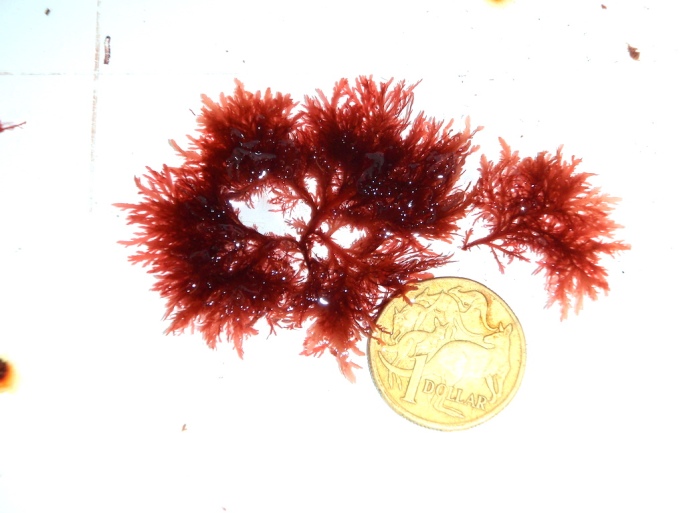 Image A. Narrow subtidal (8 m) morphology from near Beaver Harbour, Bay of Fundy, NB (GWS041774).
Image A. Narrow subtidal (8 m) morphology from near Beaver Harbour, Bay of Fundy, NB (GWS041774).
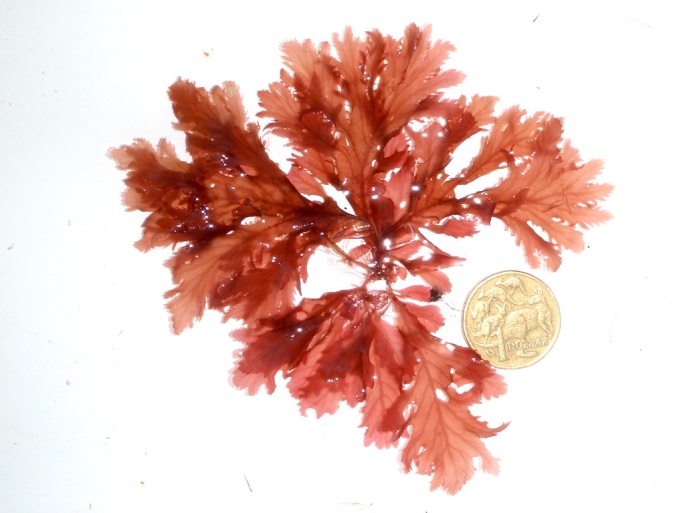 Image B. Broad subtidal (4 m) morphology from Carrying Cove, Bay of Fundy, NB (GWS030218).
Image B. Broad subtidal (4 m) morphology from Carrying Cove, Bay of Fundy, NB (GWS030218).
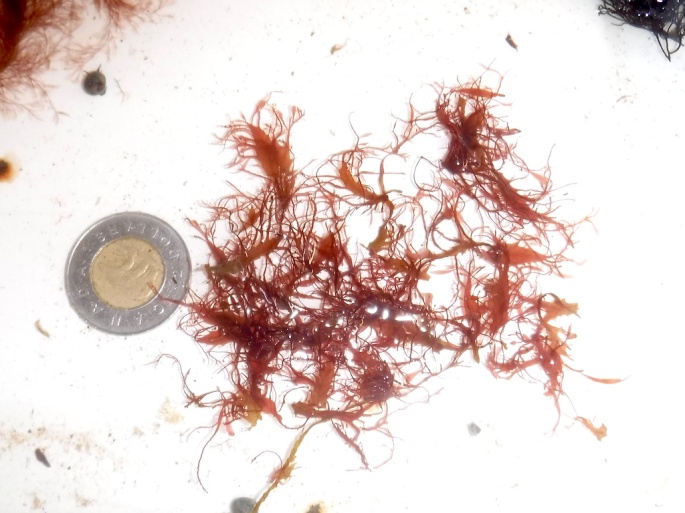 Image C. Deep and or northerly (collected as drift) morphology for an individual from Churchill, Hudson Bay, MB (GWS043573).
Image C. Deep and or northerly (collected as drift) morphology for an individual from Churchill, Hudson Bay, MB (GWS043573).
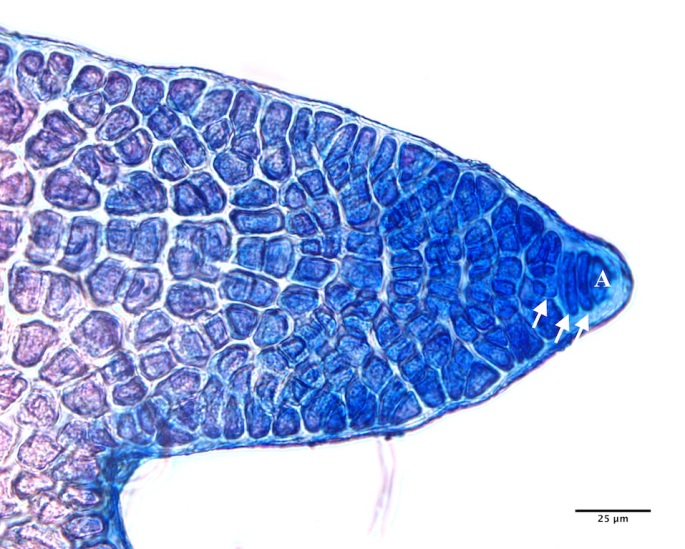 Image D. Whole mount (aniline stained) showing an apical cell (A) and only two of the subtending cells of the primary axial filament (arrows) not obscured by cortication (subtidal, Bottle Cove, NL; GWS007398).
Image D. Whole mount (aniline stained) showing an apical cell (A) and only two of the subtending cells of the primary axial filament (arrows) not obscured by cortication (subtidal, Bottle Cove, NL; GWS007398).
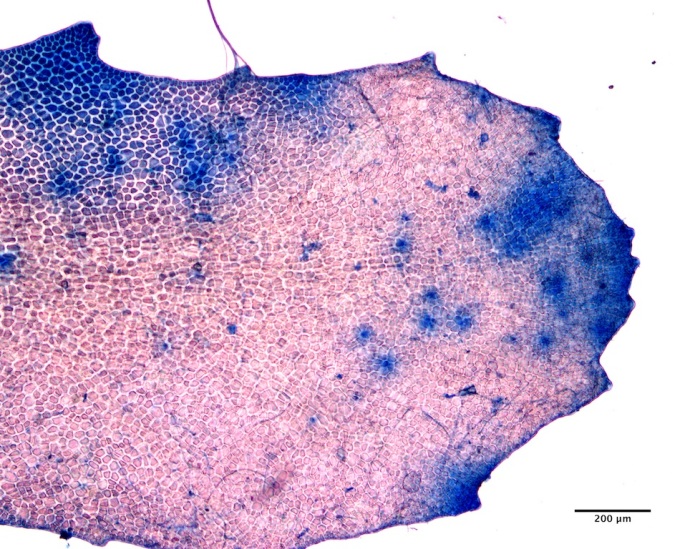 Image E. Whole mount (aniline stained) showing only weak venation near branch apices (GWS007398).
Image E. Whole mount (aniline stained) showing only weak venation near branch apices (GWS007398).
